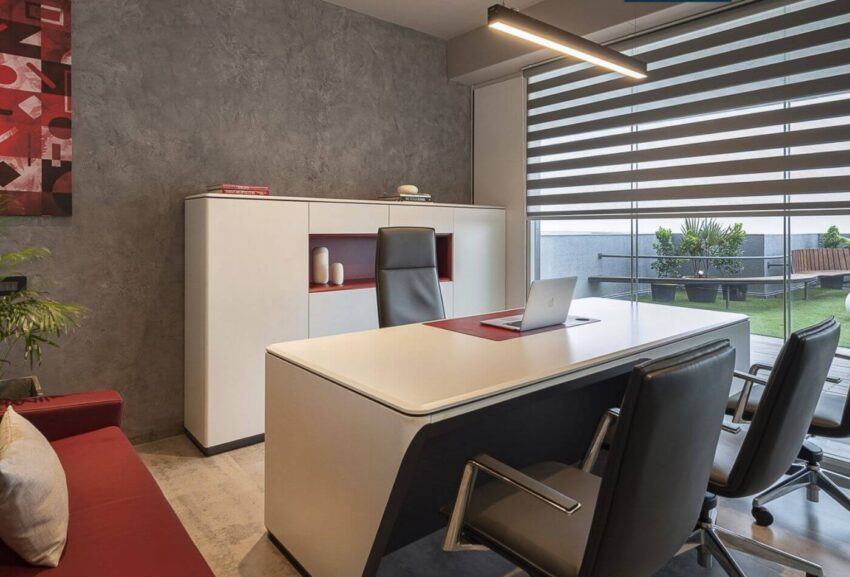Corporate office interior design plays a crucial role in shaping the environment where employees spend a significant portion of their time. It goes beyond aesthetics, impacting productivity, creativity, and employee well-being. A thoughtfully designed workspace can foster collaboration, innovation, and a sense of belonging among employees. In this article, we explore the key elements of corporate office interior design and how they contribute to creating functional and inspiring work environments.
Space Planning: Space planning is the foundation of effective corporate office interior design. It involves analyzing the available space and determining how best to allocate it to different functions and activities. A well-planned layout considers the needs of various departments, the flow of traffic, and the integration of collaborative and private work areas. Flexible layouts that can adapt to changing business needs are favored to accommodate evolving work styles and technology requirements.
Furniture Selection: The choice of furniture is crucial in corporate office design as it affects both functionality and aesthetics. Ergonomic considerations are essential for employee health and productivity, with comfortable seating, adjustable desks, and supportive workstations being prioritized. Furniture should also be selected to align with the company’s brand identity, creating a cohesive and professional environment that reflects its values and culture.
Lighting Design: Lighting plays a significant role in creating a comfortable and productive work environment. Natural light is preferred whenever possible, as it has been shown to improve mood, energy levels, and productivity. Artificial lighting should be carefully planned to provide adequate illumination for various tasks while minimizing glare and shadows. Smart lighting systems that adjust to different lighting levels throughout the day can further enhance employee comfort and well-being.
Color Scheme and Branding: The color scheme of an office space can have a profound impact on the mood and atmosphere of the environment. Warm tones such as beige, brown, and cream create a sense of warmth and comfort, while cooler tones like blue and green promote calmness and concentration. Branding elements such as logos, colors, and graphics can be incorporated into the design to reinforce the company’s identity and culture.
Innovative Trends in Corporate Office Interior Design: Corporate office interior design is continually evolving, with emerging trends focused on enhancing employee experience, promoting sustainability, and embracing technology. Some notable trends include:
- Activity-Based Workspaces: Designing office environments that support a variety of work activities and preferences, from focused individual work to collaborative group projects.
- Wellness Initiatives: Integrating features such as ergonomic furniture, biophilic elements, and wellness rooms to support employee health and well-being.
- Sustainable Design Practices: Incorporating eco-friendly materials, energy-efficient systems, and waste reduction strategies to create environmentally responsible workplaces.
Conclusion: Corporate office interior design plays a crucial role in creating environments that foster productivity, creativity, and employee well-being. By focusing on elements such as space planning, furniture selection, lighting design, and branding, businesses can create inspiring and functional workspaces that reflect their values and support the needs of their employees. Staying abreast of emerging trends and incorporating innovative technologies will be essential in designing dynamic and future-proof corporate office environments.

